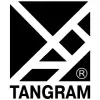
Fork, Modify, Rebrand & Dockerize App
$15-25 USD / 時間
クローズ
投稿日: 4か月前
$15-25 USD / 時間
I need an experienced developer to fork and modify an open-source web application project for the professional services market. The task involves:
- Removing features unrelated to specific 'professional services' sector, specifically:
- All links to Chinese sites, repositories, localization options etc.
- Hiding technical features from non-technical users
- Redundant features/functionality not required by the industry.
- Adding basic Role-Based Access Control (RBAC) and a user management page
- Rebranding the application
- Building a Docker image
Key functionalities to be retained:
- All other functionality is to be maintained.
Ideal skills for this job include:
- Proficiency in Docker, Python and Typescript
- Experience with open-source project modification
- Knowledge of RBAC implementation in web applications
プロジェクト ID: 38646580
プロジェクトについて
46個の提案
リモートプロジェクト
アクティブ 2か月前
お金を稼ぎたいですか?
Freelancerで入札する利点
予算と期間を設定してください
仕事で報酬を得る
提案をご説明ください
登録して仕事に入札するのは無料です
この仕事に46人のフリーランサーが、平均$21 USD/時間で入札しています

4.9
(18 レビュー)
7.5
7.5

5.0
(12 レビュー)
6.3
6.3

4.2
(43 レビュー)
7.5
7.5

5.0
(9 レビュー)
6.3
6.3

5.0
(32 レビュー)
5.9
5.9

5.0
(7 レビュー)
4.6
4.6

5.0
(9 レビュー)
4.7
4.7

5.0
(10 レビュー)
4.7
4.7

5.0
(7 レビュー)
4.3
4.3

4.8
(11 レビュー)
3.7
3.7

4.4
(1 レビュー)
4.3
4.3

5.0
(2 レビュー)
3.8
3.8

4.9
(9 レビュー)
3.2
3.2

3.6
(7 レビュー)
4.1
4.1

5.0
(1 レビュー)
3.0
3.0

5.0
(6 レビュー)
2.4
2.4

5.0
(1 レビュー)
1.8
1.8

5.0
(1 レビュー)
1.8
1.8

5.0
(2 レビュー)
1.1
1.1

5.0
(1 レビュー)
0.0
0.0
クライアントについて

Johannesburg, South Africa
0.0
0
メンバー登録日:10月 4, 2024
クライアント確認
類似のお仕事
$250-750 USD
$250-750 USD
$250-750 USD
$10-30 AUD
$3000-10000 CAD
$10-30 CAD
$5000-10000 USD
$30-250 USD
₹12500-37500 INR
€18-36 EUR / 時間
$30-250 USD
$10-30 AUD / 時間
$30-250 USD
₹12500-37500 INR
$10-30 USD
$10-30 USD
$30-250 USD
$250-750 USD
€6-12 EUR / 時間
$10-30 USD
ありがとうございます!無料クレジットを受け取るリンクをメールしました。
メールを送信中に問題が発生しました。もう一度お試しください。
プレビューを読み込み中
位置情報へのアクセスが許可されました。
あなたのログインセッションの有効期限がきれ、ログアウトされました。もう一度ログインしてください。


























